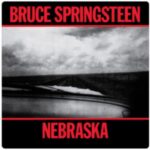
Highway 61 Revisited kicked open the doors to countless minds, including that of Bruce Springsteen.
Bruce Springsteen once described the opening note that starts off Highway 61 Revisited as “the snare shot that sounded like somebody’d kicked open the door to your mind.” While there is every possibility that the album Bob Dylan will be remembered for is Blood on the Tracks, I‘m placing my bets on this one. It certainly pushed folk music into the alley and prompted a hundred thousand or so acoustic college folkies to quit school, hire a drummer, find a bass player, and dream up some gonzo lyrics in order to quick-start their rock careers. In short, this album changed a lot of things. Almost 60 years after its release, Highway 61 Revisited remains relevant musically, lyrically and sociologically.
The opening number, “Like A Rolling Stone” works on many levels; it was apparently written about a self-obsessed New York model. Brian Jones of the Rolling Stones felt strongly that the song had been written about him. But Dylan, being the trickster that he is, with the most self-deprecating sense of humor of any of our folk-blues-rockers, may even have been writing about himself; after all, Dylan is the ultimate loner with no direction home. This tune features Mike Bloomfield on guitar, one of the greatest white blues guitarists ever.
The album contains no filler material, something which cannot be said for any other Dylan album. In fact, as Dylan himself commented:
I‘m not gonna be able to make a record better than that one… Highway 61 is just too good. There‘s a lot of stuff on that that I would listen to.”
The title track refers to the highway that runs from Minnesota down to New Orleans, and the road was known at the time as The Blues Highway. At the junction of Highway 61 and Highway 49 was where Robert Johnson sold himself to the devil in exchange for his mastery of the blues guitar. The Biblical references, the droll lyrics, the larger-than-life characters, and the raucous beat are an amazing contrast to most of his earlier and his later work; Dylan never again achieved the combination of humor, outrage, and violence that collided in the making of this tune.
“It Takes A Lot To Laugh, It Takes A Train to Cry” was originally conceived by Dylan as “Phantom Engineer”, and it doesn‘t take much imagination to see and hear that mystery train racing through the night alongside Highway 61. It‘s a great tune, with some of Dylan‘s easiest and most memorable singing. “Just Like Tom Thumb‘s Blues” contain some of the strongest lyrics Dylan has ever written, particularly the closing lines “ I‘m going back to New York City, I do believe I‘ve had enough”. This is folk music turned on its ear.
The masterpiece that closes this album is of course “Desolation Row” and I recall hearing that Dylan claimed the song should be America‘s national anthem: there‘s been a longstanding rumor that the basis for this song is a Duluth lynching of several black circus workers that had occurred during Dylan‘s father‘s youth. The story is unconfirmed, but the lyrics closely parallel the mob hysteria that surrounded the event. Two acoustic guitars, closely-miked and played in a Spanish-sounding style, form the entire hypnotic instrumentation of this song.
Jackson Browne named this record as his favorite album of all time. I have to agree. Other than The Beatles’ Rubber Soul, what other album from the Sixties still has the power to kick open the door to our minds?




For me, it’s the greatest album of all time.
Not a wasted note, not a throwaway line.
It re-defined the game for everyone else.
Bob Dylan is the greatest songwriter of all-time, but none of his other albums can be said to have done that to the same degree.
This is an excellent choice and I did buy a copy of this album a long time ago and I now have a CD mono copy that came out in 2010 with a release of his work from 1962-1967. It is only because I bought a copy and listened to this music over and over that I began to appreciate the brilliance of Dylan’s writing and power of the music that was created. Even though I didn’t readily get the meanings of his music I knew that there was something special there. There simply aren’t that many artists today that would come close to the talent he does. If there is a contemporary artist I would like to know they are!!
We keep listening to newer artists, David, with that in mind. While we don’t want to be seen as stuck in the 20th century, the talent from back then still looms large, which is why we continue to listen and be inspired by songwriters such as Dylan, Lightfoot, Hardin, Ochs, Lennon: great artists all whose influence extended beyond music.